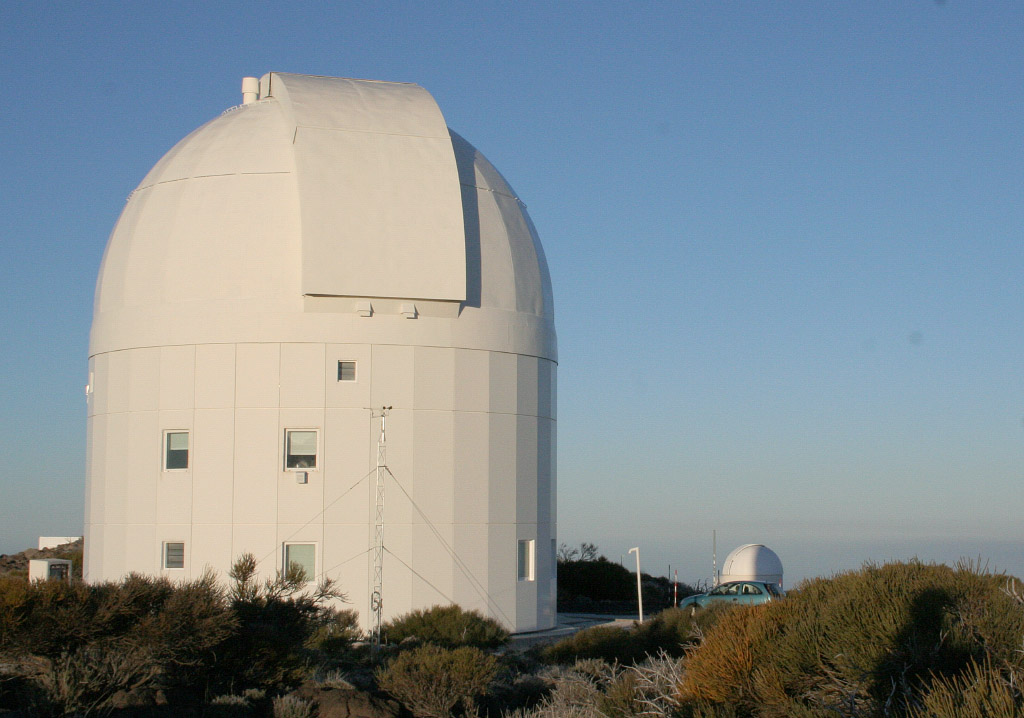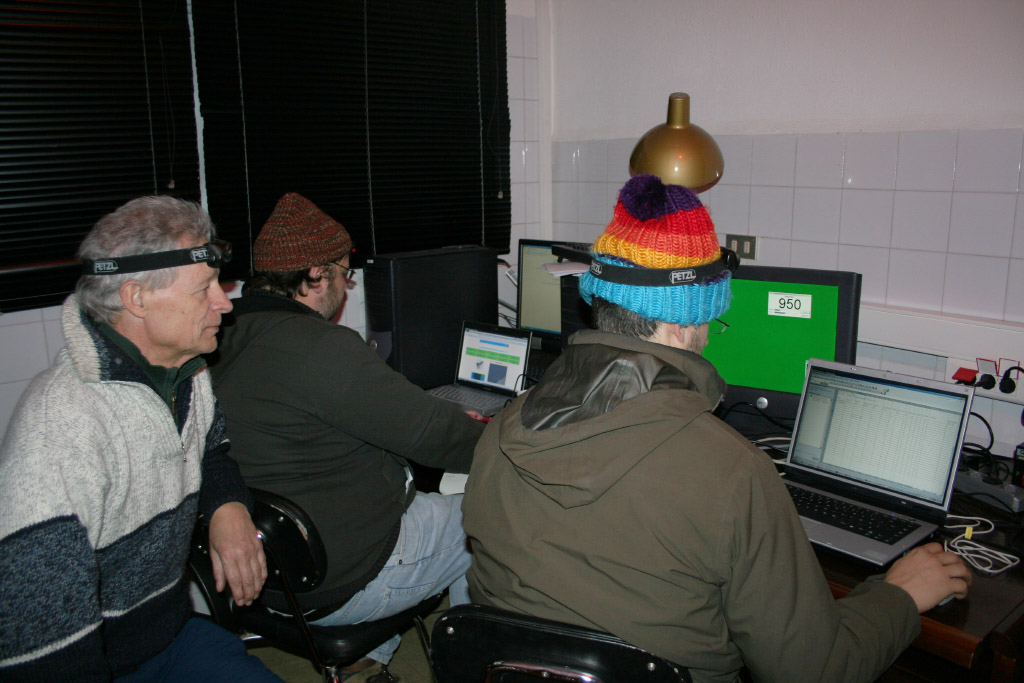
Teide Observatory
The Teide observatory (TO) is established in the Canary island of Tenerife. It is located at East of the Teide summit, at La Izaña, at 2400 m altitude.

Near the residence a memorial describes the inauguration of the Instituto de Astrofísica de Canárias (IAC) in 1985. The IAC, with facilities at La Laguna, manages the observatories of Teide in Tenerife, and the Roque de los Muchachos in La Palma. Its facilities are equipped with workshops with the ability of building large structures, such as those of the GranTeCan.

The TO has a large amount of either solar either night telescopes. Mons is shown in first plane.

A great concentration of solar telescopes can be found at East of the observatory. The image bellow show the prominent Gregor (1.5m telescope) at left, and the VTT (0.7m vacuum telescope) at right, as well as the dome of Themis (0.9m telescope) in the rear plane.

The solar laboratory includes several facilities, such as this solar pyramid. Here, six experiments are performed, including studies of the solar seismology.

A panoramic by the residence shows at left the pneumatic structure where a segment of the future "Extremely Large Telescope" (ELT) is in test. The ELT will be a telescope that will have 42m in diameter. Immediately at right it is the IAC-80, and to the right the always dominant solar telescopes.

The OGS, is a night telescope with 1m.

The CMB, captures the cosmic microwave background radiation.

A panoramic with the residence at right.

The facilities at the residence are very comfortable. Two distinct rows of rooms can be found, one for the night workers, and one for the solar workers. A restaurant, restrooms, and a Wi-Fi zone are also included.

The Big Bear observatory studies the "Earthshine" by measuring the albedo of the non illuminated side of the Moon.

The interior of this robotic telescope.

The Mons is a 0.5m university telescope.

The control room is located at the low level.

The telescope hasn't Go-To and must be aimed by hand, using the graduated setting circles.

The night at La Izaña is amazingly beautiful.

Acknowledgements:
Johan Knapen - scientist at IAC
David, Santiago and all the staff of TO, that provided us a more comfortable and secure stay
IAC - by allowing a 4 month campaign at the Mons telescope for the WR140 periastron.